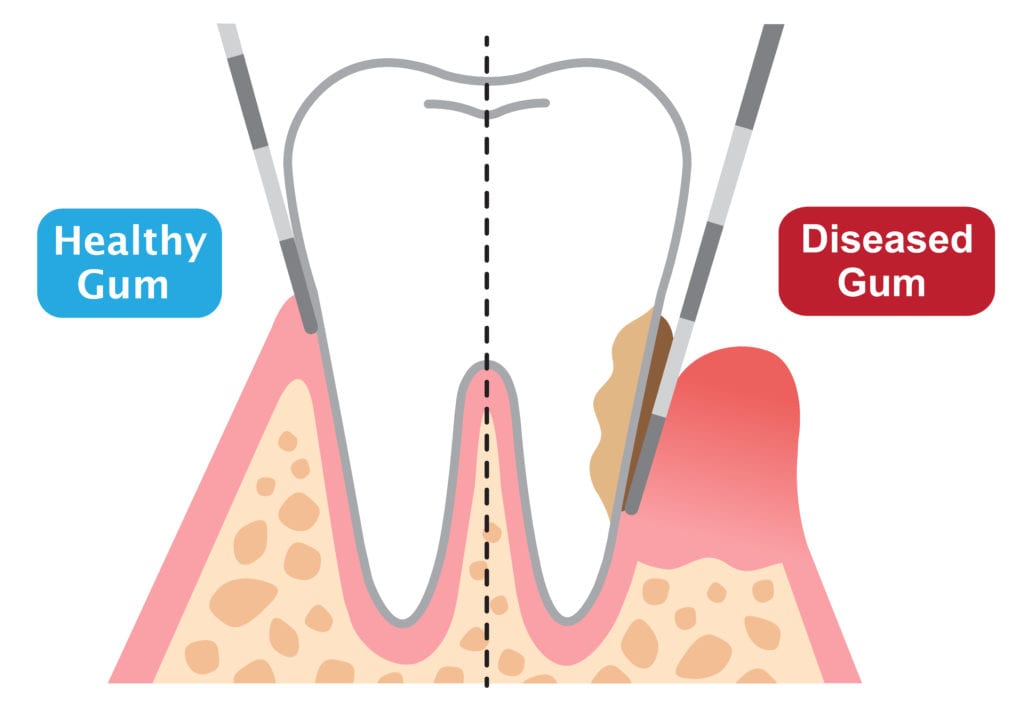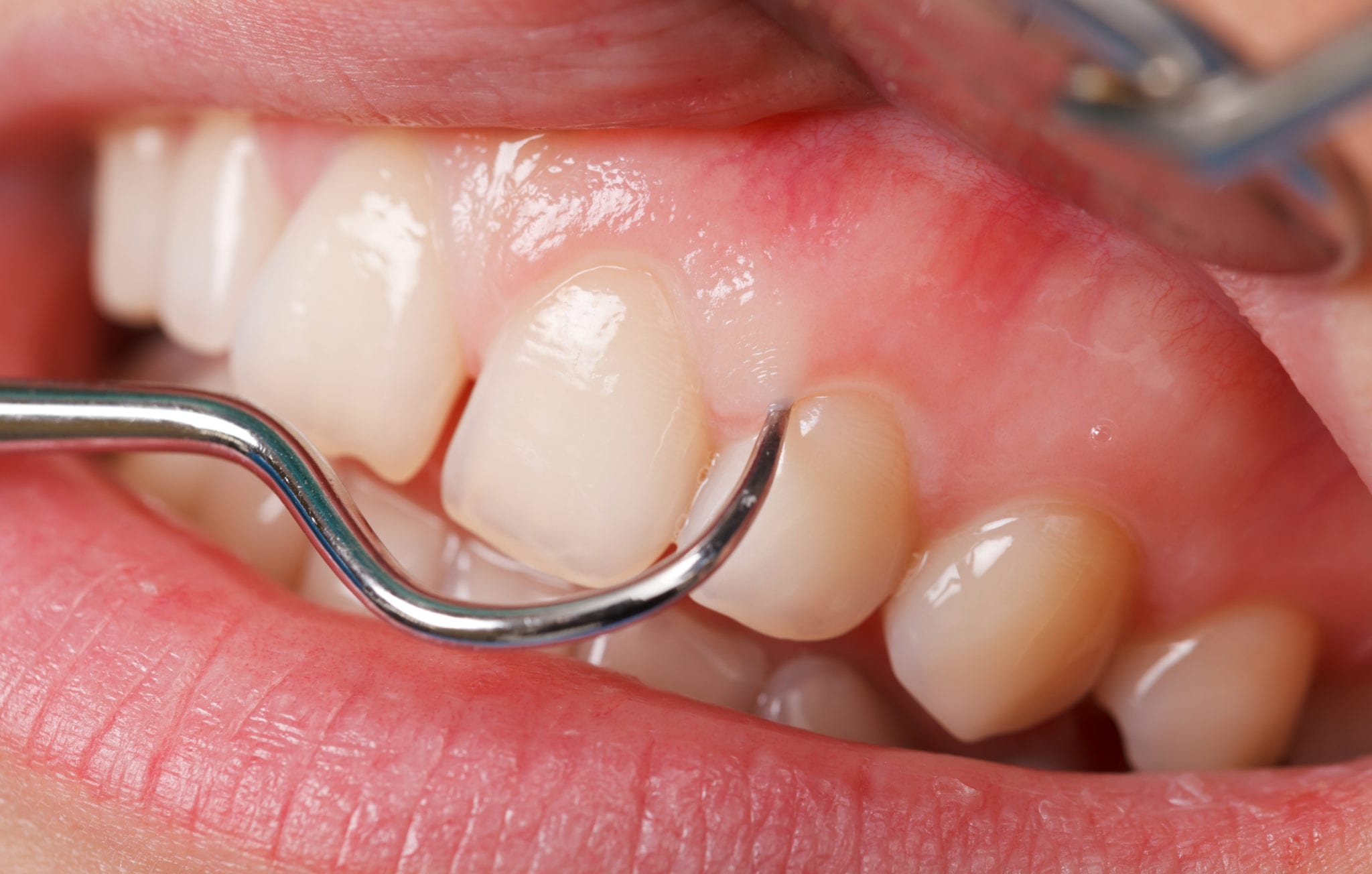Gum disease, also known as periodontal disease, is a leading cause of tooth loss in adults. The Centers of Disease Control and Prevention reports that 47.2 percent of adults ages 30 or older have some stage gum disease. Risk increases with age and activities like smoking or chewing tobacco.
You want to keep your teeth and gums healthy for a lifetime. Learn how you can prevent gum disease through proper oral hygiene.
What Is Gum Disease?
We’ve all heard of plaque. It’s a film of pesky bacteria that sticks to your teeth and can harden to form tartar. Plaque causes infection and inflammation in the tissue around your teeth when it spreads below your gum line. This infection is called gum disease.
Symptoms of gum disease include:
- Swollen gums
- Bright or dark red gums
- Bleeding gums
- Bad breath
- Pain while chewing or brushing
- Gums that pull away from teeth
- Loose teeth or a change in bite
- New spaces between teeth
Depending on the severity of your symptoms, you may not realize you have early stage gum disease. That’s why it’s important to see a dentist regularly.

Gingivitis: Early Stage Gum Disease
Gingivitis is the first stage of gum disease and the only one that’s reversible. Gingivitis causes gum irritation and inflammation, as your body fights the infection of bacteria. Your gums may be tender, red or swollen. They may also begin to pull away from your teeth. Luckily, gingivitis can be treated by a dentist.
A professional dental cleaning may be enough to alleviate your gums and remove plaque. Scaling and root planing is a common treatment that dentists use to scrape away plaque below the gum line and smooth root surfaces.
Periodontitis: Advanced Stage Gum Disease
If gingivitis progresses, it can turn into periodontitis. During this advanced stage of gum disease, pockets form between your teeth and gums. These pockets deepen and fill with bacteria, causing further harm to your gum tissue and bone.
You may lose tissue and bone if you let a gum infection become periodontitis. Your tissue and bone are what hold your teeth in place. Losing them may mean losing one or more of your teeth. Advanced cases of periodontitis may require surgery.
How to Prevent Gum Disease
Practicing proper oral hygiene is the best way to prevent gum disease.
Brush & Floss
When you brush and floss, you remove plaque and leftover particles from food. You should brush twice a day and floss at least once day. Don’t forget to brush your tongue to remove bacteria there, too!
Plaque builds up quickly, so brushing and flossing should be a part of your daily routine. You can also use a mouthwash to further remove food particles and bacteria after brushing.
Visit A Dentist
Of course, you should make it a point to visit your dentist regularly for professional cleanings. While you are in the office, ask your dentist for brushing and flossing tips. You may pick up a trick or two that will help you take better care of your smile.
Do you have signs of gingivitis?
If you’re experiencing what may be symptoms of gum disease, contact our dental office in Springfield, MO. We’ll examine your smile and talk with you about treatment options.




